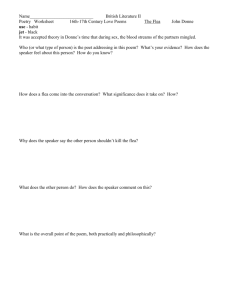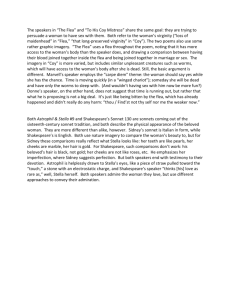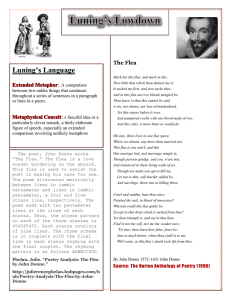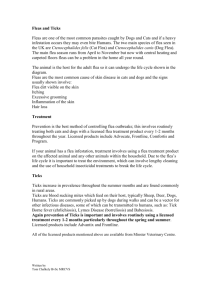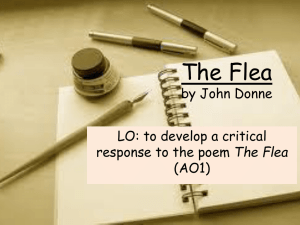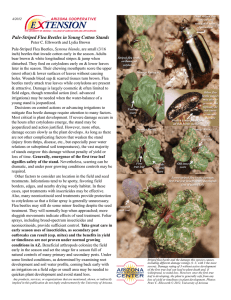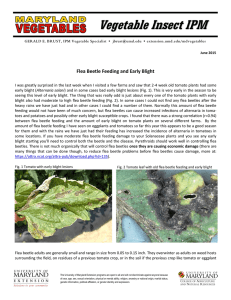Information for Authors to Scientific Journals
advertisement
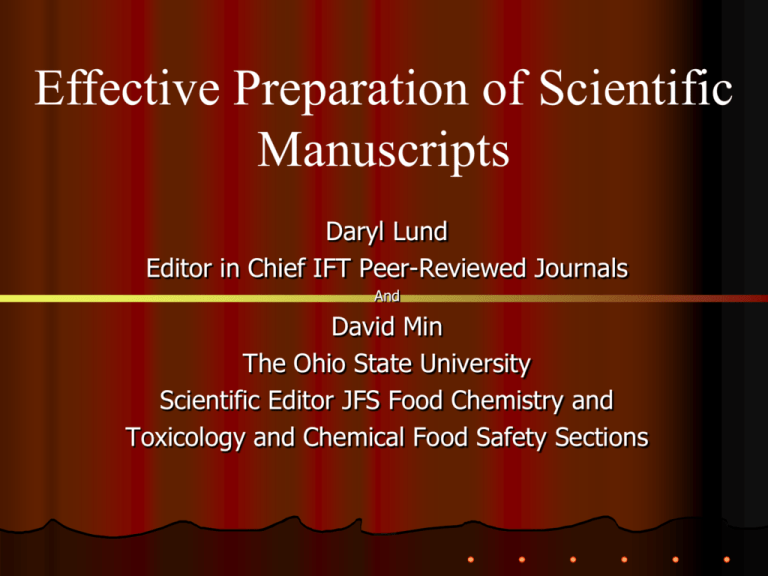
Effective Preparation of Scientific Manuscripts Daryl Lund Editor in Chief IFT Peer-Reviewed Journals And David Min The Ohio State University Scientific Editor JFS Food Chemistry and Toxicology and Chemical Food Safety Sections Mission of Scientific Journals To publish original, high quality, and important findings in a specific scientific area with peer- review The purpose of Journal of Food Science is to publish important findings in food science and technology. Therefore, the contents of a manuscript should be within this scope and be relevant to the readership of the Journal of Food Science. Why Do You Publish? Make contributions to society Be recognized professionally by peers Advance in the profession Roles of the Scientific Editor Scientific Editor decides the publication fate of manuscripts based on the opinions of other scientists who judge the quality of submitted papers - “peer review process”. Scientific Editor is the guardian of scholarly record, with the duty to ensure that published papers are scientifically of high quality and free from errors. Criteria for Acceptance Originality Novel or creative research methodology New and important research findings Criteria for Acceptance Scientific Quality Appropriate experimental design and methodology Data presentation and interpretation Appropriate statistical analysis Depth of the investigation Substance of the results Thorough and logical discussion of results Criteria for Acceptance Clarity of Presentation Organization of presentation Readability, clarity of writing, and grammar Paper is much more likely to be rejected based on inadequate analysis than lack of originality Importance to the Scientific Field and the Readership Usefulness of findings to food scientists Writing a Scientific Paper Scientific writing is primarily an exercise in organization. Scientific writing is highly stylized with distinctive components. Scientific paper should have the proper order of components. Research work should be communicated effectively and clearly using simple words of known meaning. The best English in scientific writing is to make the point in the fewest possible words. Writing Scientific Paper Use simple and short sentences instead of complex and long sentences. Divide long sentences into two or three simple short sentences. Enjoy the sheer beauty of a simple declarative sentence using clear, precise words. If the components are properly organized, the paper will almost write itself. Two Essential Ingredients Good Appropriate organization language within the organization Components in Original Research Manuscript • • • Title Abstract Practical Application (optional) • Introduction • Materials and Methods • Results and Discussion • Conclusions • References Title To describe the nature and content of research concisely and accurately. Concise to describe the content of study with the fewest words – 20 words. Clear and informative. Capture the importance of the study and the attention of the reader. Describe actual findings that can be supported in the manuscript. Abstract Enable readers to identify the basic contents of a paper quickly and accurately. State succinctly what was done and how it was done Conclusions should be justified by the results in the text Information in the abstract should be presented in the main text Not exceeding 200 words in Journal of Food Practical Application (optional) Provide the reader with a perception of the utility of the research Assist staff in preparing announcements of the research Assist reporters in spotting important research of particular interest to the general public Journal of Food Science’ Request Enter “Practical Application:” followed by a brief description, in layman’s terms, of the potential industrial or consumer application of the research presented in your paper. Keep the description short, about 1 to 3 sentences, and in language nonscientist readers can easily understand. The brief should describe probable uses for your work, whether for direct commercial application, to aid in further research efforts, or for consumer impact. Do not make unreasonable claims that cannot be derived from the work described in the paper. Introduction Provide the readers with sufficient background information to evaluate the results of the research No more than 2 typed pages usually Focus on the main subject Brief and well integrated review of pertinent work Cite key and current literature Introduction Extensive review of the literature is not needed Explain the importance of your research What new or important scientific information is needed to advance knowledge in the subject area? State clearly why the research is needed and worth doing State the objectives of your work Materials and Methods Provide sufficient analytical information so that work can be repeated. Use appropriate experimental design to answer the research question. Cite and use the accepted and current methodology. If a published method is modified, such modifications must be described in detail. Describe new methods in detail. Describe statistical analysis of data if appropriate. Use subheadings as needed for clarity. Results Present research data concisely and interpret the data scientifically. Short and sweet with no excess verbiage. Work consistent with the objectives stated in the Introduction. Results Reproducibility and sensitivity of analytical methods Report representative data rather than endless repetitive data Numerical data with the correct number of significant digits Results Table and figure legends should be accompanied with sufficient information to make the main point so that minimal text is needed. Present results concisely using tables and figures as needed. Do not present the same information in both tables, figures, and the text. All tables and figures must be numbered in the order in which they are mentioned in the text. Discussion Show the relationships among observed facts. Point out any exceptions or lack of correlations, and define any unsettled points. Discuss the discrepancies between new results and previously reported results in similar studies. Discuss the research limitations and identify future research. Discuss the theoretical implications and possible practical applications of your research. Conclusion Identify key findings and application to food science and technology Conclusion should not be a summary of the work done or a virtual duplication of the abstract. Conclusions should be justified by the experimental design, methods, and results. References Cite current and key pertinent references. Consider references from the journal itself. Reference citations must be accurate and complete. The number of references should be appropriate without a complete historical bibliography Why Was My Manuscript Rejected ? Immediate Rejection Criteria The subject matter is of insufficient interest to the readership to a specific journal Lack of new information The results are trivial, predictable, or duplicative of others Insufficient international importance or interest Scientific quality is substandard due to poor experimental design and methodology Improper conclusion Suspected misconduct - fabrication and plagiarism Suggestions Neatness counts in scientific research publications! Wrong Experiment and Conclusion Experiment A biology professor trained a flea for many months. He was able to get a response from the flea each time when the command was given. The professor shouted the command “Jump” and the flea leaped into the air. The professor decided to determine the location of hearing receptor. Experiment Professor removed the legs of the flea one at a time. The flea continued to leap on his command “Jump”. But as each successive leg was removed, his jump became less spectacular. Finally, with the removal of the last leg of flea, the flea did not response to the command “Jump” and the flea remained motionless. Conclusion “When the legs of a flea are removed, the flea can no longer hear. Therefore, the locations of hearing receptors are in legs.” So, please consider IFT’s journals for your manuscripts Journal of Food Science Journal of Food Science Education Comprehensive Reviews in Food Science and Food Safety Sections of JFS Concise Reviews/Hypothesis Food Chemistry Toxicology and Chemical Food Safety Food Engineering/Physical Properties Nanoscale Food Science, Engineering, and Technology Food Microbiology and Safety Sensory and Food Quality Health, Nutrition, and Food
